
If you’ve been reading this website for any length of time, you probably know by now that I love chain-stitching, the old school process that results in a gorgeously textured embroidery. A few pro sports teams still use chain-stitching — most notably the Cardinals, Phillies, and Blackhawks — and you can also find chain-stitching on things like vintage bowling shirts (as you may recall, we mimicked that style for a faux-chain-stiched Uni Watch T-shirt last year) and vintage western wear. But if you want some really primo non-vintage chain-stitching done in the classic old-school style on old-school machinery, your best bet is the reproduction jerseys made and sold by Ebbets Field Flannels.
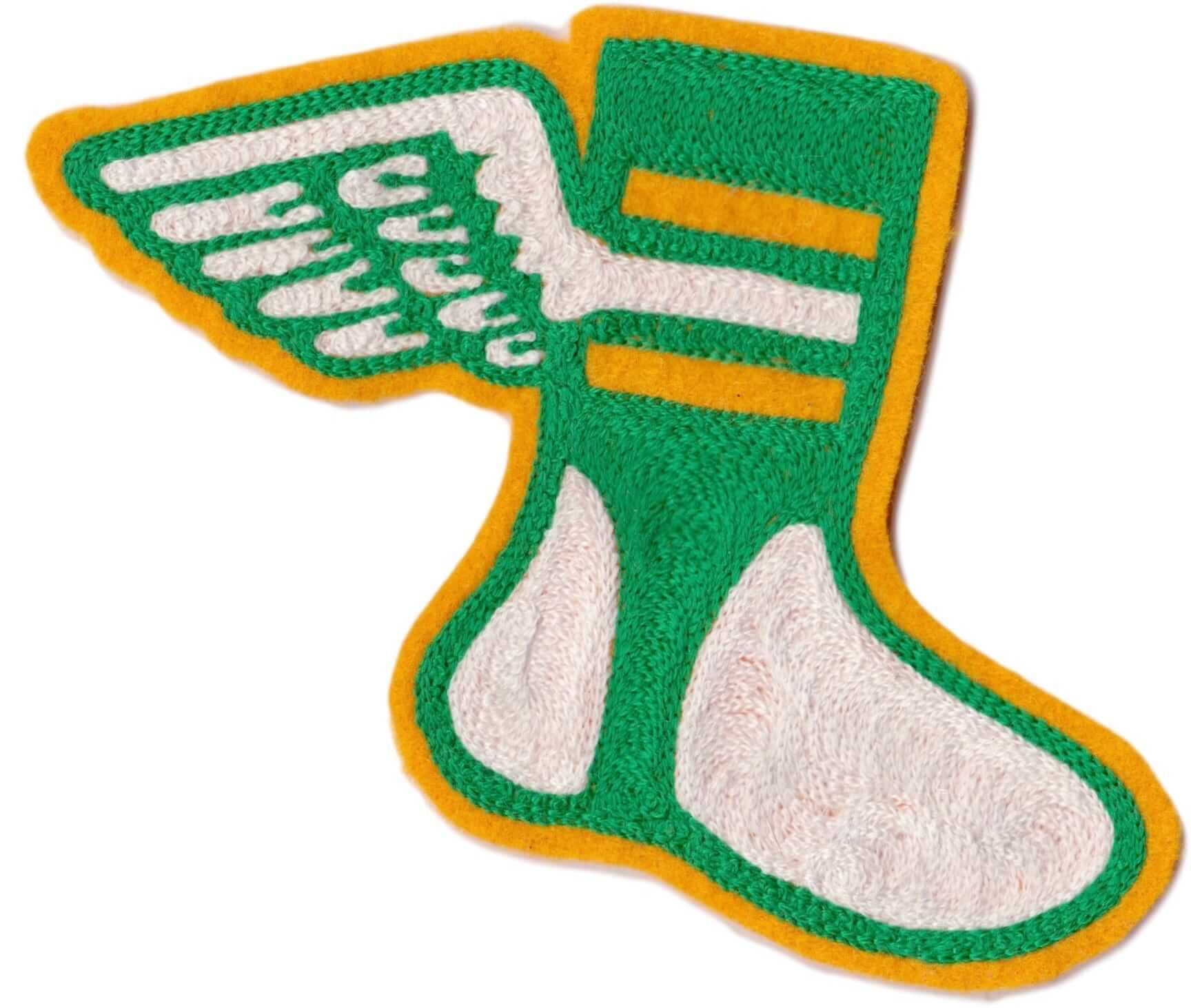
The Ebbets chain-stitching is all done by a woman named Amy Bengtson (that’s her at the top of today’s entry). She introduced herself to me a few months ago by sending me a chain-stitched version of our winged stirrup logo (shown at right; click to enlarge so you can appreciate all the fine details) — a very friendly and completely unexpected gesture. I wanted to know more about how she works, so we did a phone interview back in early July. Unfortunately, my summer then got very complicated and I didn’t get to transcribe the tape until now.
Fortunately, as I think you’ll agree, it was worth the wait. Here’s how my conversation with Amy went, along with some photos and videos that she provided to help show her working process.
Uni Watch: First please tell me a little about yourself. How old are you, and where do you live?
Amy Bengtson: I’m in my 40s and I live in Seattle, but I’m originally from Kansas. I went to Kansas State for architecture.
UW: Are you a sports fan yourself?
AB: You know, growing up in Kansas, I used to be much more of a sports fan. K-State football, K-State basketball — that’s all there is to do. These days, I would say semi; my family would probably say no. It’s all relative.
UW: Do you make a living from sewing and stitching?
AB: I do now. But I’ve only been doing it for four years.
UW: Wow — seriously? How did you get started with that?
AB: It turned out that I was not cut out to be an architect. So in my search to figure out what I wanted to do — like I said, I grew up in Kansas, and Kansas doesn’t really — I’m trying to be delicate about this — it’s not really a place that gives you an opportunity to do a lot of creative things, so it’s hard to know what’s out there.
So I moved to Seattle, and in my search to find something creative, I kinda stumbled across this. I’m an artist — I’ve had commissions, my work was featured one time in Architectural Digest. And in the middle of a commission, the manager at Ebbets Field was like, “Hey, would you be interested in learning this? We keep finding people to do it, but they’re always old, they retire, they die.”
UW: When you say “the manager at Ebbets,” was that Jerry Cohen?
AB: It was not Jerry, but I know Jerry and Lisa [Cooper, EFF’s vice president and creative director] very well. I’ve been friends with Lisa for almost 20 years.
UW: So that’s how you were on Ebbets’s radar to begin with?
AB: Yeah, exactly. So they asked if I wanted to learn chain-stitch, and I always love to learn something new. I wasn’t sure I could measure up to Jerry’s standards, but I did.
UW: So it wasn’t that you were already doing this and then they found you — it’s more like they recruited and trained you.
AB: Actually, they couldn’t train me, because nobody knew how to use the [chain-stitching] machine. They had an old machine from 1942 and they thought someone on their manufacturing staff could figure it out, but nobody could.
At the time, I was in the middle of a really big art commission. And the kind of art that I do, I have a laser-cutter engraver, and so a lot of making this artwork involved me putting a piece under the laser, pushing a button, and then 20 minutes later putting in another piece and pushing the button. So I had time, while I was being paid for the commission, to figure out the chain-stitch machine. [You can see some of Amy’s laser-cut artwork, which she produces in collaboration with her husband, here and here. It’s etched enamel on wood paneling. — PL]
It took me about three months. I had to do a lot of research, calling people. I ended up finding someone who was doing chain-stitch on bowling shirts out of St. Louis. She had previously done the chain-stitch for the St. Louis Cardinals, when they did it by hand. That’s one of the great things about Ebbets, that they try to stay true to that. So every customer gets something that looks pretty similar, but because it’s done by hand, there are little variations.
Anyway, I eventually figured out how to use the machine, and now I have it here in my home, which is where I work.
UW: So if someone gets something from Ebbets that includes chain-stitching, was that definitely done by you?
AB: Yes, anything with chain-stitch was done by me. I do direct-to-garment — right onto the jersey — and then I do a lot of patches. I also do the chenille, but not for everything. For most of the jackets, they use a company out of Portland that has an industrial, computerized system for chenille.
UW: Aside from Ebbets, what other sorts of clients do you have?
AB: My deal with Ebbets is that I don’t do any other sports work. I do have outside projects that are kind of sporty-looking, though. I’ve worked a lot with the rapper Macklemore — he’s local, and he likes to support local artists. I’ve worked with his designer on tour jackets that he’s worn. I can’t say enough nice things about him — he’s the nicest guy, and everyone on his team is respectful and great to work with.
UW: A lot of people can identify chain-stitching when they see it, but what exactly is chain-stitching, and how does it differ from other types of embroidery?
AB: It’s a loop that comes through a loop that comes through a loop [hence the name “chain-stitch” — PL]. You know the stitching that you sometimes see at the top of a bag of dog food, or cat litter, or charcoal? That’s chain-stitching — it you pull the thread at one end of a loop, it all comes undone to open the bag.
Also, chain-stitch is more layered. Most embroidery is like a satin stitch, where it’s flat, but chain-stitch is more textured.
UW: And you do it the old-school way, right?
AB: Yes. Most embroidery these days is done by a computer. Someone draws it and then it goes into a machine that produces it, and it’s going to be exactly the same every single time. But the way I work is by hand. I do use a machine, but I have, like, a joystick that lets me control the thread, so I’m actually drawing with the thread.
UW: What is this machine that you’re using?
AB: It’s a Singer 114E103. They were made up until the 1940s, or maybe the early ’50s. It has a computerized motor that’s been added to it, but that just makes it go faster or slower. I guess it used to have a pedal or something like that — honestly, I’m not sure. It has a lot of knobs, but they don’t have any numbers on them, so I had to figure out what they all did. And you know, I didn’t even know how to sew when I started doing this.
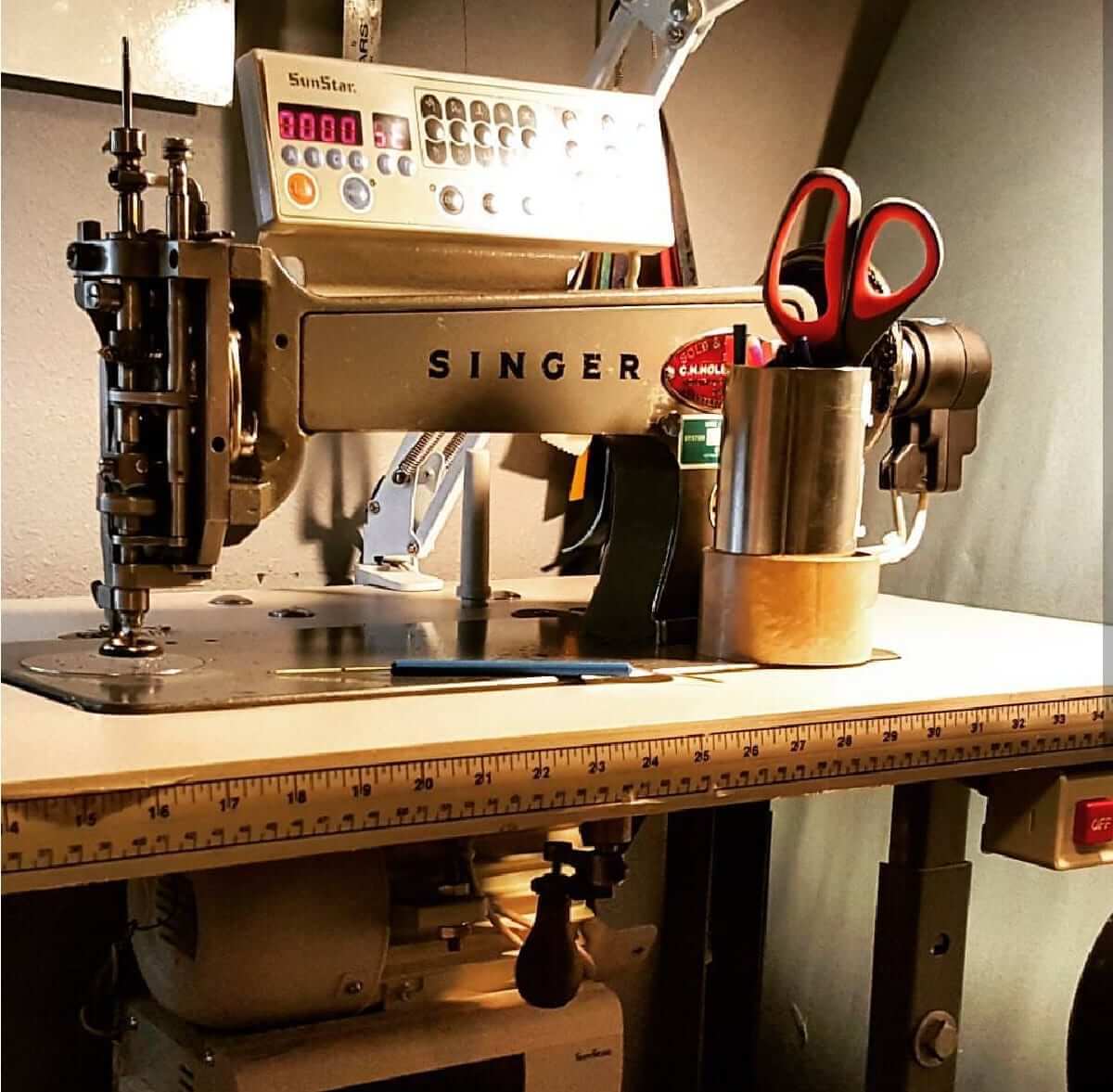
UW: It really is amazing that you’re such a recent convert to this, and here you are doing all the work for the premier retro sports brand.
AB: That’s my thing, though. If I could be a student for the rest of my life, I’d be happy. I love to learn new things. Seriously, if you ever have a question on any other art form, I’ve probably tried it. Everything from welding to graphic painting to fusing glass — I’ve tried it all.
UW: Does that mean you won’t be doing this much longer, because you’ll move on to something else?
AB: No. First of all, I really like chain-stitch because it’s kind of meditative. Once you get the pattern down, you’re sort of drawing in circles and it’s really meditative and relaxing. Also, I like that I don’t have to guess what somebody wants. With art or jewelry or some of the other things I’ve done, it’s like, “Is it on-trend, is it not on-trend?” With this, I can provide a beautiful hand-made product, but I don’t have to worry about what the actual design is.
UW: Do you now have a practiced enough eye that you can look at a chain-stitched item and be able to tell whether it was done by a computerized machine or the type of hand-driven technique that you use?
AB: Probably. When it’s computerized, everything is just so uniform. There’s no difference in loop, no variation at all.
UW: A few baseball and hockey teams still use chain-stitching on their jerseys — the Cardinals, the Phillies, and the Blackhawks. Have you seen their current jerseys up close, and if so, how good a job do you think they’re doing with their chain-stitching?
AB: You know, I have not seen them up close. I really need to go check that out. But Ebbets recently got the contract to do a bunch of old Blackhawks jerseys for a museum, and I got to work on those. It was a lot of fun.
UW: Chain-stitching is often applied in lots of little loops and swirls, and you mentioned earlier how that can be almost meditative for you. What’s the deal with those loop patterns? Like, does chain-stitching have to be that way, or is that just a common style?
AB: I think it’s the common style for sports. There are a few other places where chain-stitch is really popular. One is motorcycle jackets, and the other is western wear. And if you look at those, they don’t use as much of the swirl style. With the motorcycle jackets, they do more just up-and-down lines to fill in the space.
UW: Do you have to use special thread for this type of work?
AB: The sad thing is, the threads they used back in the day were beautiful. I have some vintage threads, but you can’t really get ’em anymore.
UW: Wait, so it’s not just a matter of this being a lost art, produced on old machines that are no longer made, but the actual thread has changed over the years?
AB: For the work that I do for Ebbets, I use two different kinds of thread. One is a viscose thread [which is another name for rayon — PL], which, if you look at it closely, is little fibers wound together. The other thread I use is wool, which I use mostly for chenille. But I also sometimes use it for chain-stitch, because it gives an even older, more vintage look.
But the older viscose thread, if you can get it, is not wound, so it has more of a sheen, which is really, really pretty. Once again, that’s something I can see that maybe the unpracticed eye wouldn’t notice. That old thread is really hard to come by, and every now and then you’ll see someone on Instagram say, “Look what I found!” and then you get all jealous.
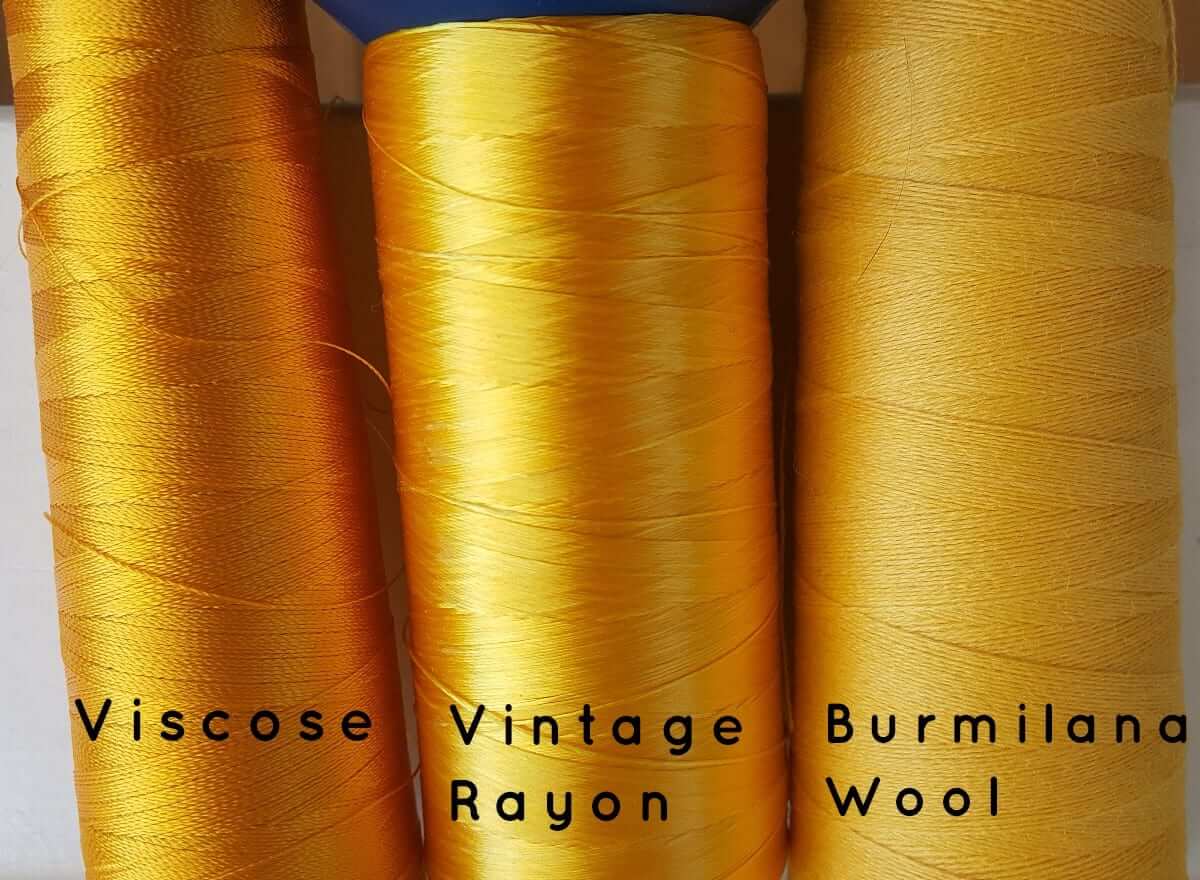
UW: These threads that you normally use, are they specifically intended for chain-stitch, or you just happen to use them for that?
AB: It’s a thicker embroidery thread, so it’s meant for embroidery in general — including chain-stitch, but also other types of embroidery. The good thing is that you can order it and it comes in, like, 100 colors. Whereas the old stuff that I was trying to source at the beginning, when I started doing this, came in only about eight colors. And now I can’t get it at all.
UW: What’s your typical working process. Like, do you work from a pattern? Or are you working from a reference photo, or an original jersey?
AB: I mentioned earlier that I have a laser, which I can use to cut templates. So if it’s a patch, I will stick the felt under the laser and have the laser draw out the pattern for me. If it’s a jersey, I’m not going to stick a jersey under my laser, because (a) it’s a little dirty and (b) I wouldn’t want to hit a wrong button and accidentally cut right through the jersey. So for jerseys, I have this thick tagboard stuff that I cut out, and then I use that as a guide to hand-draw the pattern on each jersey.
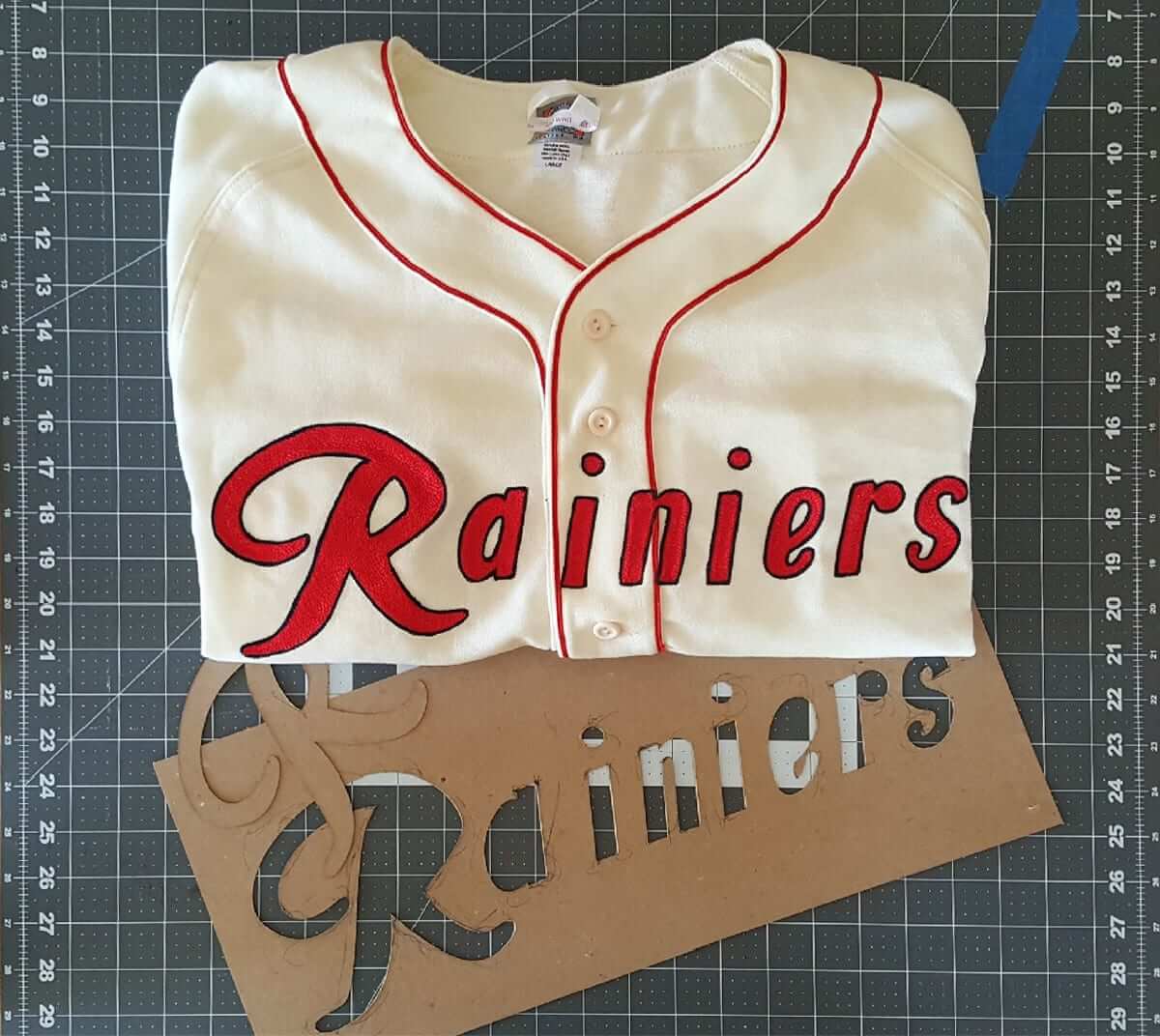
UW: Let’s say you’re doing an Ebbets jersey. How long does that typically take?
AB: Depending on the jersey, probably between 45 minutes to two and a half hours. The one that takes the longest is the Portland Beavers jersey. That’s the one that made me learn how to sew, because you have to deconstruct the front panel because it has a zipper. You can’t chain-stitch over the zipper, so I draw the whole thing on, I take the front panel apart, I chain-stitch the part that goes over the zipper, I sew it back together, and then I chain-stitch the rest and try to make it look seamless. That can take up to three hours.
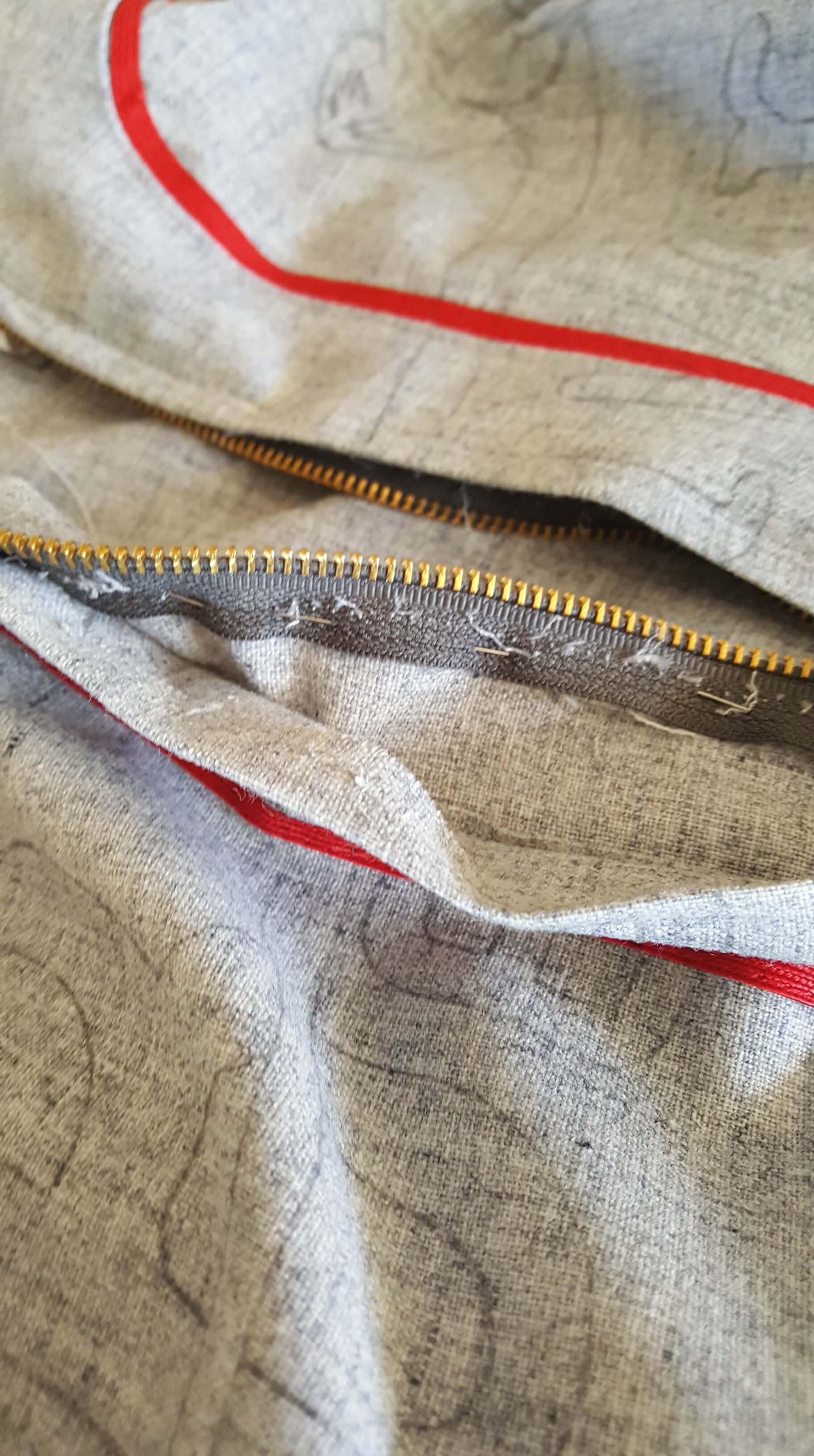
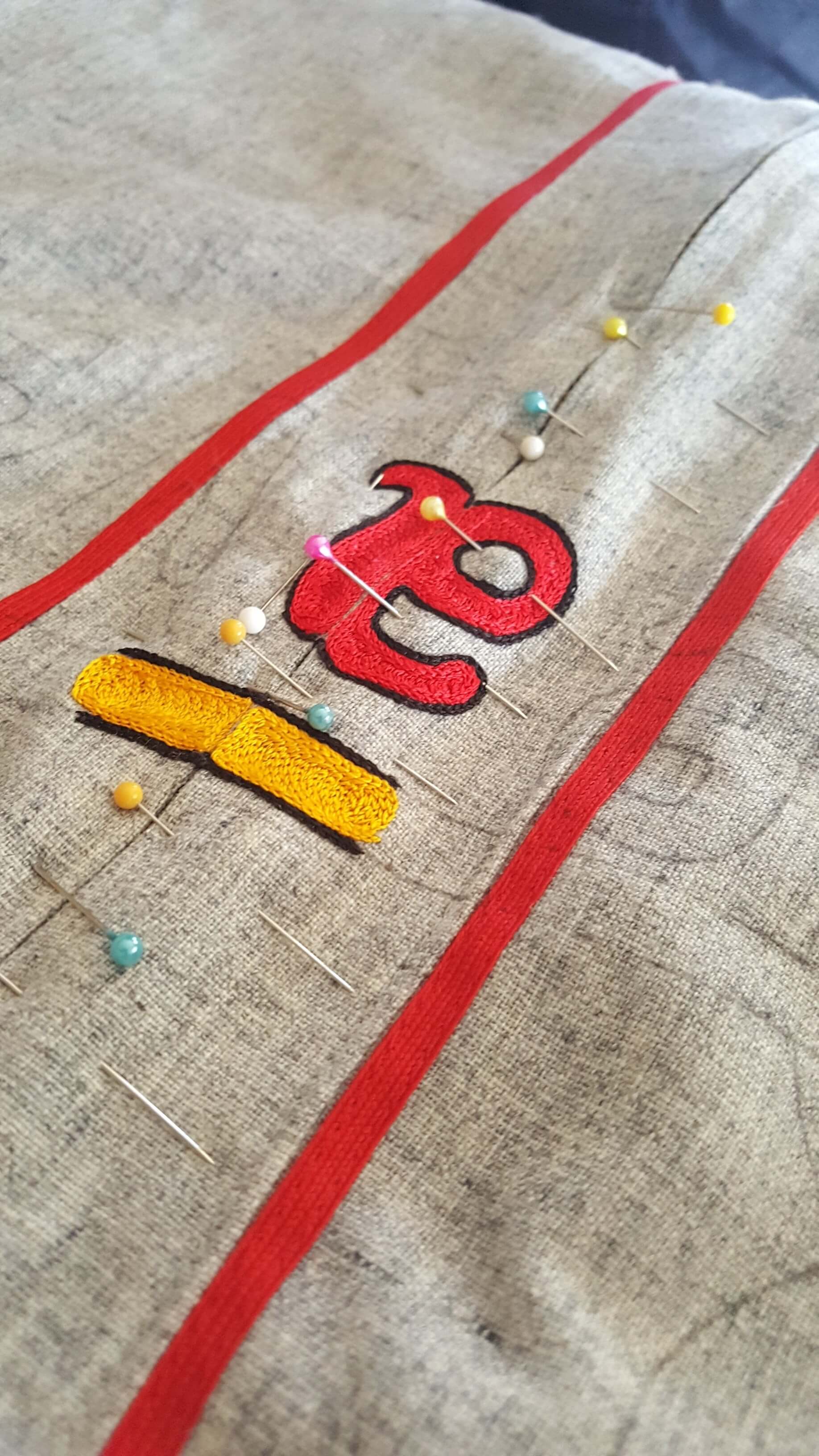

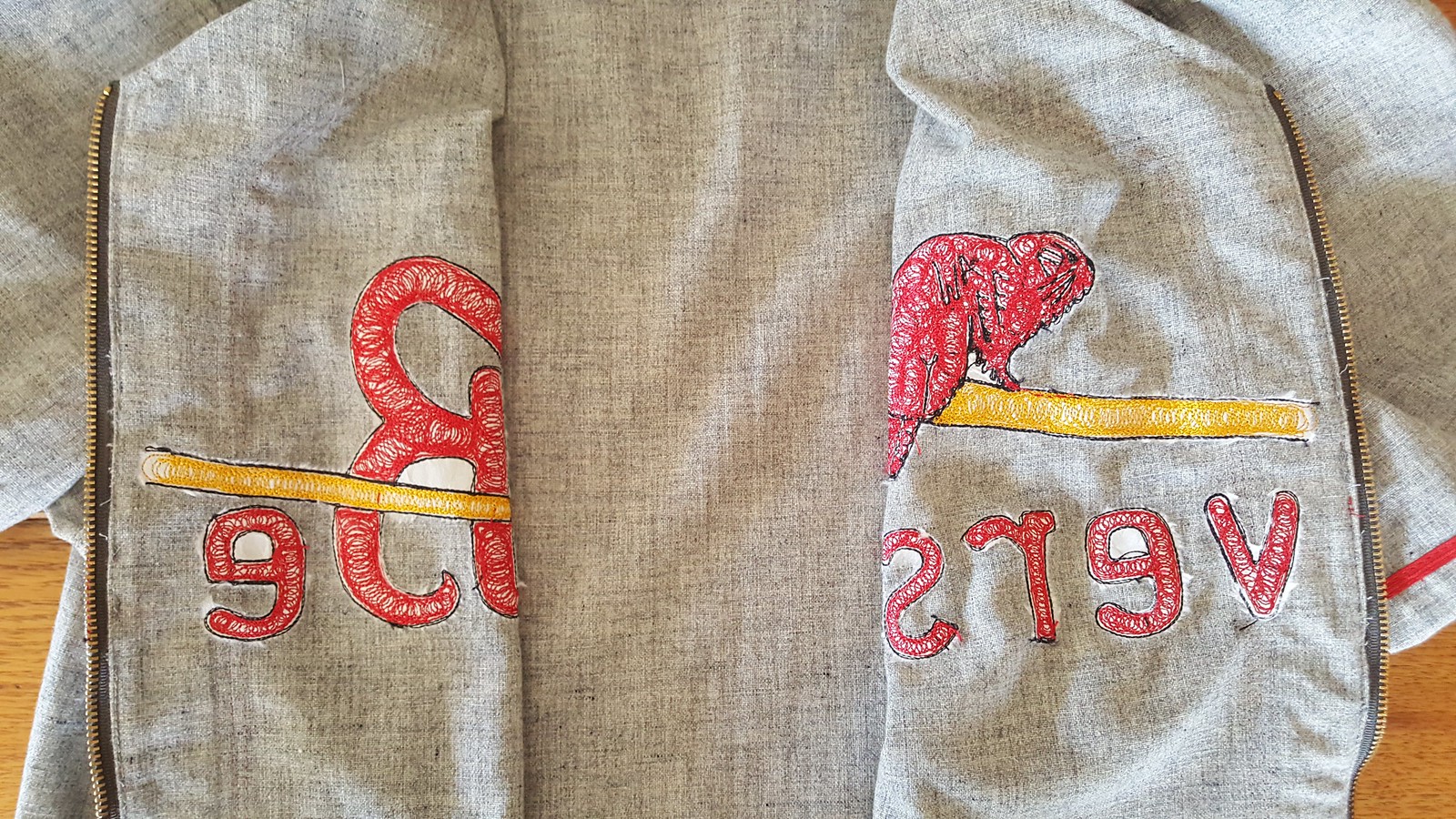
UW: You were nice enough to make a chain-stitched patch of the Uni Watch “winged stirrup” logo. How did you decide to do that, and what was the process for that piece?
AB: My husband also works for Ebbets, and he helped prepare your cap for production. We thought that would make a great patch, so we took your artwork, used my laser, and then I drew the patch and hand-cut it. Ebbets will usually send me the pre-cut patch, but that obviously wasn’t the case for your patch.
UW: I thought it was interesting that you used the gold backing fabric to serve as the gold stripes, instead of doing gold chain-stitching for the stripes.
AB: Yeah, sometimes I just think that looks better.
———
Pretty fascinating stuff, right? Big thanks to Amy for sharing her expertise with us.
Now, you may be thinking to yourself, “I’d kinda like to have one of those chain-stitched Uni Watch patches! Are those available for sale?” I asked Amy about that, and she said (a) she’d need permission from Ebbets (which I suspect would not be a problem) and (b) her price, after accounting for her time, labor, and materials, would be $28 per patch. And that’s just what it would cost for me to buy the patches from her — I’d then need to mark them up a bit more so I could make a bit of a profit, plus a buck or two for shipping.
Now you can see why chain-stitching, especially the non-computerized variety, is so rare. It’s time-consuming and expensive! But if anyone is interested in spending $30something for one of these patches, let me know and we’ll get the wheels turning on that.
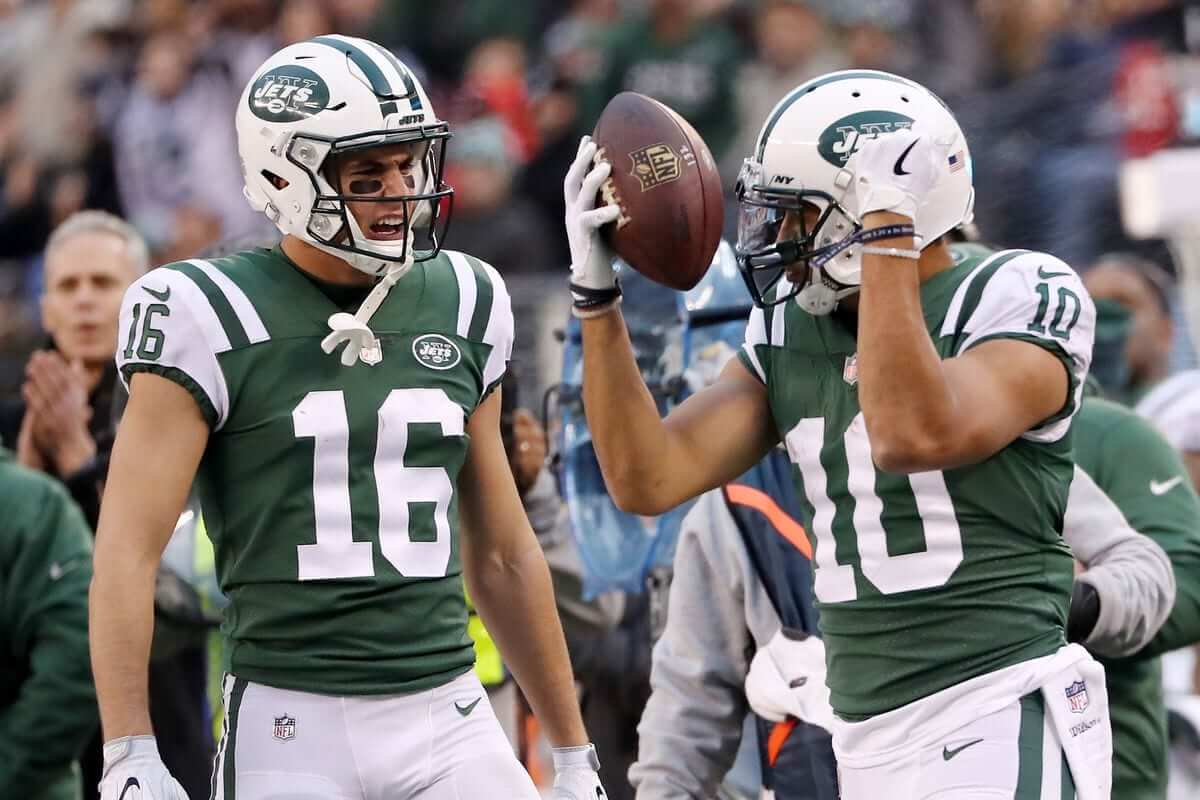
Jets-redesign reminder: Remember, I’m currently running a Jets-redesign contest. Full details here.
The Ticker
By Alex Hider

Baseball News: During the Marlins/Mets broadcast last night, Mets announcer Howie Rose said that “the Marlins will probably look different next year, from what we are hearing the Marlins will have a new logo and uniforms next year.” We’ll keep our eyes and ears open (from Jason Lefkowitz). … MLB teams wore patches on their caps to commemorate the anniversary of the 9/11 terror attacks yesterday, but the Reds took it a step farther and wore their camo uniforms (from Steve Hemsath). … The Reds also added some patriotic flair to the tail on their script logo behind the plate. … Astros RF Josh Reddick lost his 9/11 patch while running down a fly ball last night (from Bo Wright). … At least one Cleveland player’s 9/11 cap patch went over his tribute to teammate Leonys Martin (from Jay Mazzone). … Cubs C Victor Caratini had the 9/11 patch on his mask (from Mark Lackinger). … Mariners DH Nelson Cruz wore his 9/11 patch on his jersey instead of on his cap (from Jay Danbom). … The Phillies wore their pinstripes in the daylight (as opposed to their cream alts, usually reserved for day games), apparently because yesterday’s game was originally scheduled to be a night game (from Tim Kelly and Frank McGuigan). .. Rockies P German Marquez played without a squatchee last night (from Brice Wallace). … Orioles prospect DJ Stewart got his call-up this week. He’ll wear No. 62 while he’s with the team (from Andrew Cosentino). … Kyle was at a Tigers 1968 World Series exhibit at Comerica Park, and spotted some good items: The bra padding that C Bill Freehan used to pad his mitt, Willie Horton’s helmet — the same one he used for his entire career — and a set of usher’s uniforms from Tiger Stadium. … MLB is apparently running out of non-cringeworthy slogans for its annual postseason dugout sweatshirts. Here’s what we’ll be stuck looking at this year (from Trent Guyer). … Also from Trent: With the Red Sox having clinched a playoff spot last night, here’s what their postseason caps will look like.

Pro Football News: Raiders RB Marshawn Lynch wore long tights with a striped left leg and short black socks on Monday night (from Omar Jalife). … Jets LB Frankie Luvu’s “eye” black covered almost his entire face on Monday night (from Mike Chamernik). … Jags RB Leonard Fournette wore I <3 NY cleats on Sunday against the Giants (from Neil Vendetti). … Yesterday marked the 12-year anniversary of Washington owner Dan Snyder trying to profit off tragedy with a 9/11 commemorative cap (from Mike Chamernik). … According to this promotional email from DirecTV, the Browns are playing the Browns on week 14 (from K.C. Kless). … Steve Speicher is in a fantasy football league where players draft entire teams. He ended up with the Broncos, Dolphins, Falcons, and Rams and made a four-way Frankenlogo for his team. … The mother of Patriots Devin and Jason McCourty wore a blue/white Patriots Frankenjersey to the game on Monday — but the numbers didn’t quite line up (from Alex Smolokoff). … According to Brandiose, the creative minds behind many minor league baseball team logos, the company was set to unveil the logo for the Albany Warbirds arena football team on Sept. 12, 2001, but the idea was scrapped after the 9/11 terror attacks.
College Football News: A Christian law center wants Army and Air Force to drop Nike due to the company’s ad campaign with Colin Kaepernick (from Phil). … Reports indicate that Oregon will be wearing black this weekend against San Jose State (from Phil). … Colorado will be going GFGS this weekend (from Zeke Perez Jr.). … Texas Tech wanted to wear white at home for their “Celebrate Cotton” game against Houston this week, but Houston didn’t agree. Tech will have to pick another color (from Phil). … Here’s a blog has uniform power rankings for ACC teams (also from Phil). … Bonita High School in California is poaching Penn State’s lions’ head logo, though they’re wearing it on their helmets.

Hockey News: The 3D Senator is returning to center ice in Ottawa. The Sens used their “O” logo at center ice last year (from Chris Blackstone). … Speaking of the Sens, owner Eugene Melnyk appeared in a video wearing an old Reebok sweater that had to have been made prior to 2011, due to the vector logo on the sleeve. (thanks to all who shared). … The Sabres will be among the teams with ads in the corners, per this time-lapse video (from Brad Loliger). … The Stars shared a video explaining how their rink is built before each season (from Sam McKinley). … Speaking of the Sabres, did anyone else know that they wore “New York” jerseys in one of their first games following the 9/11 attacks? (From Moe Khan). … New uniforms for the University of British Columbia Thunderbirds (they’re the team in white) (from Wade Heidt). … Daniel Rogers got his hands on what he believes is a never-released prototype of the Predators “mustard cat” alternates that they wore from 2001 to 2007.

College Hoops News: The jumbotron at George Washington’s Charles E. Smith Center fell onto the court yesterday. Whoops. (from Mike Chamernik and James Gilbert).

Soccer News: Photos have leaked showing a Jordan-branded Paris Saint-Germain jersey (from Michael Borgel). … Apostrophe catastrophe spotted at the USMNT’s game last night (from Benny Armstrong). … The London Bees, an English second-tier women’s team, have new uniforms. As our own Jamie Rathjen points out, the Bees are affiliated with men’s League Two team Barnet and share a stadium and colors, but have their own kits, crest, and name. … Also from Jamie: Liberia is retiring No. 14 in honor of George Weah, Liberia’s president and one of the country’s greatest players. Per Jamie, retiring numbers is rare in international soccer. … The Richmond Kickers of the USL will host the “First Responders Cup” on Sept. 26, pitting the city’s fire department and police department against each other. Of course, the game will be a red-on-blue matchup (from Josh Hinton). … FC Cincinnati players wore black armbands last night. I can’t say for certain, but I would assume the armbands are to honor the victims of a shooting that took place downtown last week (from Mitch Eifert). … In 1981, the Chicago Sting ran a promotion where they let a goat — reportedly a descendant of the infamous billy goat that cursed Cubs — onto their field at Comiskey Park. It worked, as the Sting would go on to win the league title in 1981 (from Marc Viquez).

Grab Bag: In the wake of her U.S. Open title, women’s tennis star Naomi Osaka is in line for a record-setting endorsement deal with Adidas (from our own Brinke Guthrie).
On a serious note, for all our readers in the Carolinas and the surrounding regions, Phil and I and the rest of the Uni Watch team have you in our thoughts as the storm approaches. Be safe! — Paul
Error in the soccer part of The Ticker – it’s George Weah not George Welsh
Fixed.
Sorry, no screen grab, but the 9/11 patch on Cubs pitcher Jose Quintana’s cap was starting to work its way loose in the late innings of Tuesday night’s game.
Typo: in the section of the interview about the Beavers jersey. Should be sew, not so.
Thanks. Fixed.
George Weah is the president of Liberia. Not Welsh.
Regarding the Sabres “New York” jerseys, they were part of a fundraiser for the Twin Towers Fund in the Rangers first home game after 9/11. Both teams wore “New York” jerseys.
More details here: link
I remember when that game happened.
Also, while not donning “New York” jerseys for rather obvious reasons, the Flyers had their own unique way of supporting the fund, wearing their recently-retired orange jerseys on Halloween, but with FDNY, NYPD, and flag patches along the tail. link
Here’s an awful pic of the jersey – can’t find a hi-res version.
link
Other typos:
“The London Bees, a second-tier women’s team,”
Add “English” after “second-tier.”
“the Bees affiliated”
Add an “are.”
“pitting the city’s fire department police department against each other”
Add an “and.”
Got it.
No to start WW3 or anything, but I’d happily pay $5/month to get rid of the ad ribbon at the bottom of the screen. Just sayin’…
What’s with the apostrophe catastrophes, anyway? Is there a theory as to why folks can’t see that their apostrophes are upside down? I really don’t get it.
Explained here:
link
Seems like the Red Sox postseason hoodie actually does NOT have an apostrophe catastrophe on the left sleeve, so that’s progress.
Ever since you wrote about it, I cannot ignore the rampant use of upside down apostrophes, makes me wish people knew how that punctuation mark should be used.
Interesting article on Amy and EFF. I’ve spent many a game day going through EFF flagship store in Seattle. Nice to put a face behind such good work!
“According to Brandiose, … the company was set to unveil the logo for the Albany Warbirds …but the idea was scrapped after the 9/11 terror attacks.”
Are we sure it wasn’t scrapped simply because it’s horrible?
Was this officially the last time any American institution nixed a project for being too aggressively warlike?
Weah is interesting – he is President of Liberia, holds French citizenship, and his son plays on the US Mens National Team.
I guess I just assumed his wife was American, and that’s how Tim is eligible for the USMNT, but she’s Jamaican, so I suppose they lived in the US at just the right time (for American soccer hopes, anyway) between his soccer and political careers?
Correction needed on hockey ticker item. It is the UBC Thunderbirds, not Thundercats.
The photo in the link shows the old uniforms, which I submitted for comparison to the new ones. Have switched to navy blue this year. Here are the new uniforms:
link
Got it.
New Marlins uniforms as early as next year?! Thank the baseball gods. All hail Jeter!
I am going to wait and see…there is a possibility that the new uniforms could somehow be worse.
True, but that’s a decidedly low-odds possibility. Most likely, the new unis will be differently but equivalently dreary. Recall that Derek Jeter is involved, and so far his aesthetic decisions on behalf of the Marlins have been decidedly Loria-esque. “There’s No Fun in Baseball” seems to be Jeter’s motto.
On the subject of apostrophe catastrophes, the Vikings honored their 1998 team at Sunday’s game. Avert your eyes from the multiple offenses here: link
Posts like today’s are pure gold!
fascinating interview with Amy. Thanks for sharing the details and all that insight.
Though I was mortified the interview started off asking a female her age.
KEEP UP THE GREAT WORK!
If you look back at the history of interviews on this site, you’ll see that I start by asking every interviewee the same question: How old are you, where do you live, and what do you do for a living?
That first question is ageist (there absolutely NO reason to ask anyone their age…HR would have a field day with you)…that second question is questionable, who cares where anyone lives, only to someone in NYC they would find it fascinating that there could be ANY reason not to be in NY (it’s why I left after 35+ years, my whole life in NY and it’s everything I could not bear) …and that third, well, isn’t that the point of the whole interview…
All three questions help to give a sense of who the person is and the context in which they operate. Nothing ageist about it — reporters ask this question of people all the time. Standard journalistic practice.
And about this:
and that third, well, isn’t that the point of the whole interview…
Sometimes. But sometimes I’m interviewing someone about their hobby or side project, so knowing what they actually do for a living provides context.
Spot on Paul.Agree 100% about age and where s/he lives aiding “the context in which they operate.” So well stated.
Very preliminary questions designed to break the ice between interviewee and subject. NOT a job interview, so who gives a fig what an HR department would say?
“I was mortified the interview started off asking a female her age.”
He could have asked her weight too.
” (there absolutely NO reason to ask anyone their age…HR would have a field day with you)”
This isn’t as job interview so there is no HR department.
There is no reason NOT to ask this question in this scenario. She’s not obligated to answer.
Wow, slow down the perpetually offended train.
The reason you ask people their age is to help shape a picture of who they are. Your age would give people an indication on the generation you grew up in. A person in their 20s is absolutely going to have a different perspective on things than a person in their 40s.
Asking where someone lives also helps gives people information on the person, someone who grew up in NYC will have a different perspective than someone who grew up in LA who will be different than someone who grew up in the suburbs of Chicago or rural areas of Texas.
The last question is important because the interview subject might be a hobby for them, what they do for a living would be interesting to know, and if what they do for a living is the focus of the article, their specific job title and responsibilities might only be tangentially related to the topic of the interview, which would be interesting.
i agree completely (39 year old here, 175 lbs, straight male)
I will say this, anyone I’ve ever met from NY let me know it within the first 15 seconds of the conversation, even if I didn’t ask. Same goes for every person I’ve met who has an Italian heritage. They’ll LET YOU KNOW even if you don’t care.
Chain-stitching is still a really common way to decorate an outfit in West Africa. The gold in these outfits is a particularly intricate example. link
Great featured story today. As a Phillies fan it was especially interesting. Have always loved the chain stitching on my jersey.
The Reds wearing camo to commemorate 9/11 is so, so, so incredibly wrong.
Yup. And so is the flag-based trim on their field script. Someone needs to explain to them that 9/11 is a somber day of mourning, not a day to celebrate the military or get all U! S! A!
Also that it’s been 17 years. Someone needs to check the newspaper archives or ask some great-grandparents to see how Americans and American institutions commemorated the Pearl Harbor anniversary in 1958. Probably, not at all.
The US-Mexico soccer match had a soldier lead the players onto the field with the match ball, yet another shoehorning of military into a day and event that, frankly, they didn’t factor into one bit (not until the whole revenge seeking part, that is)
You mean fist pumping is a bad idea? Wonder what kind of insensitive dope would do such a thing?
Amazing feature today, Paul! Thanks for giving us a peak into the world of chain stitching, and thanks to Amy for being our tour guide!
Seconded! Definitely one of my favorite UW interviews. It’s great to come away from a profile like this not only having learned a bunch of stuff but also liking and admiring the subject.
Though I still want to learn more about the different types of rayon thread and the history of their development. Next time I need a wikipedia rabbit hole to climb down …
Browns schedule: your text says week 14, I see it as week 16
I confess I can’t see the need for a Marlins re-design. Never cared for their old teal-based look but the colors and design they’ve had since the change from Florida to Miami in 2012 are really nice IMO.
Isn’t about “need.” It’s about the new ownership group wanting to put their stamp on the team.
There is a need for it because from what feedback you see on sites like this, support for the current Marlins design is definitely in the minority.
Whoa, this I saw probably a top-five all time great Uni Watch piece today, great stuff!
There’s also someone here in Vancouver who does chain stitching on a nice vintage machine:
link
I still don’t understand how Ebbets can make even a modest profit selling these jerseys for $200 or less, considering the materials and amount of work to make one
Interesting stuff in the lede today. Nice to get some insight into how uniforms (even ones not ‘officially’ worn anymore) come together.
And I’m very happy to see that whatever was killing the site in Firefox is gone or fixed.
Re: Houston Won’t Let Texas Tech Wear White at Home… I understand that the rule is that the AWAY team has to approve the home team wearing of white at home.
Does anyone know the rationale for this rule? And how long its been on the books?
Thanks
Lee
Yeah I didn’t know about this rule at all. Got me thinking that if teams wanted to be difficult, they could totally mess with LSU and Georgia Tech’s white at home tradition. Interesting.
I was thinking the same thing. Especially a day game at LSU, when white can be an advantage from the intense Is the game in Lubbock going to be a day game? Of course before the season these games usually don’t have a set time. Seems like it should be up to the home team.
Uniform issue aside, I am surprised that the whole “Celebrate Cotton” thing has not blown up in their face.
And what’s unfortunate is that Houston’s mono-red was actually pretty attractive. And I’m not a mono- kind of guy. It had just the right amount of detail/contrasting color.
Typo: Bengtson (before her first answer)
Actually, that one was spelled correctly. It’s everywhere *else* that was wrong. Ay-yi-yi. Now fixed.
For me, a bigger white whale than the Predators’ original white-lettered mustard Preds jersey is a 1996 Penguins third jersey with the originally-planned rounded, angled numbers and NOB. The C and A in that style (which carried over to the Vegas gold era) were remnants of that plan. As far as I know, the angled numbers only appeared once on television when a sample was held up, but apparently never saw game action.
NHLUniforms.com has had a small page about the Sabres’ “New York” jersey for several years now. Really awkward-looking jersey, since the wordmark doesn’t seem to fit quite right between the side stripe panels. But obviously it was a cool charity idea.
George Weah actually played in Liberia’s friendly last night vs Nigeria.
A Christian law center wants Army and Air Force to drop Nike due to the company’s ad campaign with Colin Kaepernick (from Phil).
WOW, that is a rather biased article.
Gem of a lead story. I greatly enjoyed reading about the chain stitching process. Thanks!
Great interview that answered an age-old question of “How do they do that?”
Nice article, but there are two questions you never ask a woman. “How old are you?” and “How far along are you?”
Sexist.
Ha, the same goes for men!
Is that why she gave a specific answer?
Nobody’s required to answer any question. But that doesn’t mean there was anything wrong with the question.
Since silver is a color of University of Colorado, it doesn’t seem that GFGS is a fair characterization
What about:
How much do you weigh?
What religion are you?
How much money do you make?
Why aren’t you married?
Do you always dress like that?
Why are your kids a-holes?
stuff like that
a biscuit shy of 300#
Catholic
three times as much as I made in 1998
i am
yes
’cause they take after me
wait a minute, why are you asking me all of that, Dumb Guy?
Agreed, I was thinking the same thing
I agree 100%. So many people think that black and gold are CU’s only colors. Its football team uses at least a little bit of silver on all of its jerseys.
Really enjoyed the “Chain-Stitching”. Will be the first time I share my passion for sports uniforms with my wife, without her thinking I’m a little strange.
Loved the chain-stitching interview, Paul!
Marlins may not “need” to change their logo and uniforms, but after years of PR debacles with the fans and general public of Miami (reflected in their terrible attendance numbers) , they’re probably looking for a fresh start. That, and their currents uniforms are terrible.
Jeter already said they are changing
This. This is why we love this site.
Awww, you guys….
It’s been really gratifying to see how many people have gone out of their way to say how much they liked today’s entry. I was worried it might be one of those tl;dr entries, especially given the niche subject matter.
Frankly, I don’t think there’s such a thing as a “TL;DR” piece by Paul.
This was definitely a lede that separates People Who Get It from people who don’t. I loved it!
Re: Jordan-branded Paris Saint-Germain jersey
Seems really weird to have a soccer (football) jersey with a logo of a guy jumping and grabbing a ball with his hands, considering that doing so is mostly illegal in soccer.
I’m pretty sure that Do Damage hoodie is a reference to a Brian Cashman quote about how the Yankees always do damage against the Red Sox.
Thank you for the article about Ms. Bengston and chainstitching. Information like this is the primary reason I come to this site.
History update on Colorado Buffs. Original official CU team colors were and still are Gold and Silver. Black was added later in 50s or 60s. There was a disastrous period of sky blue replacing black which was reversed in the 80s. Anyway, CU wears silver uni article as an official team color, not grey for grey’s sake.
Wonderful work Amy! Even though you may not be using your degree for it’s intended purpose it is always great to see a fellow (roughly the same age) K State Arch alum success story. Paul, thanks for the interesting article (as usual).
Fantastic work Amy (and Paul) Thanks for the great read today.
I have a 1942 New Orleans Pelicans Jersey from Ebbets Field Flannels. It is a work of art. I get more compliments on that jersey than any others I own and wear. They do great work! Thanks for the story!
Thanks for the fascinating interview about chain-stitching. It’s information like that which compels me to return to this site everyday.